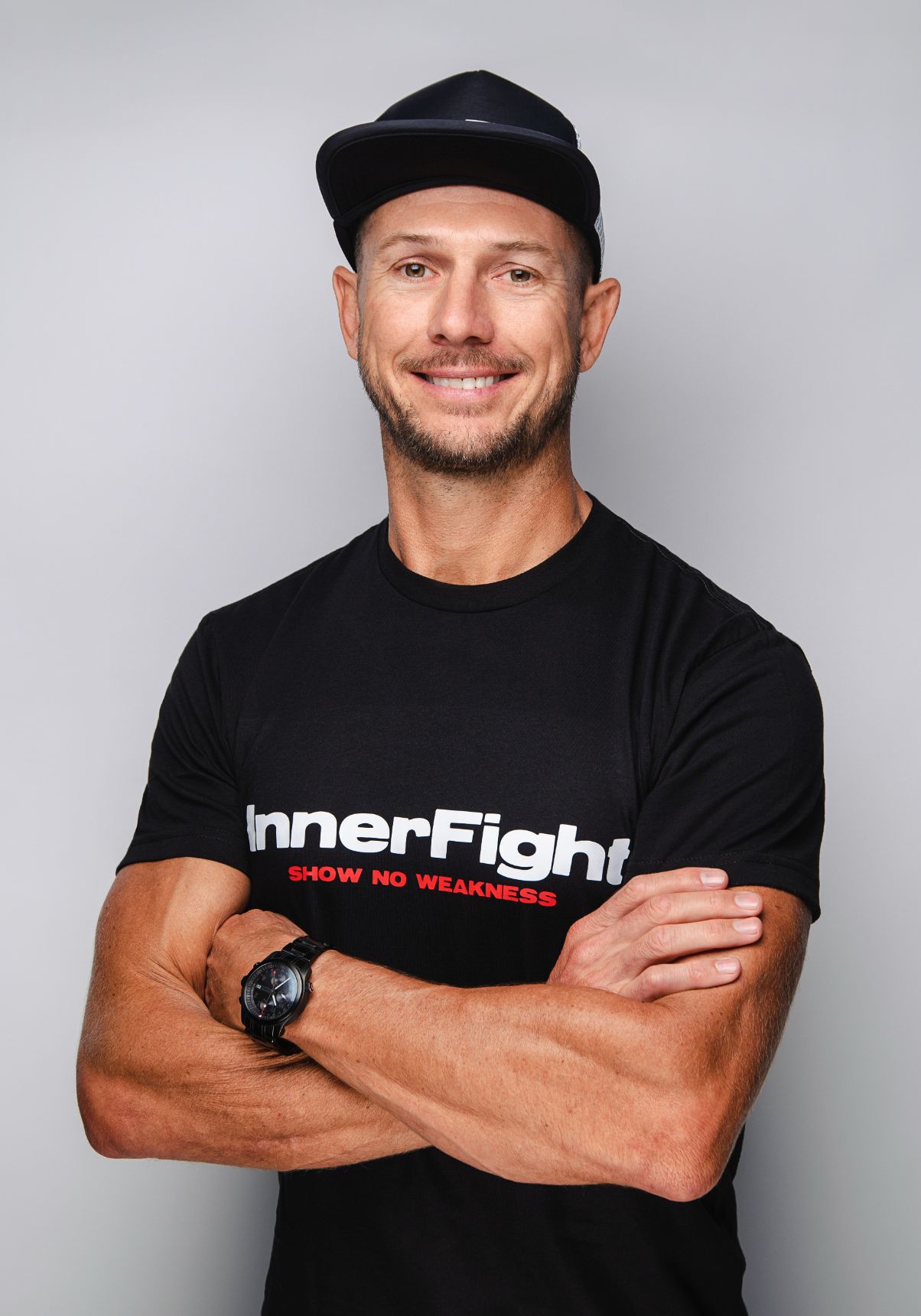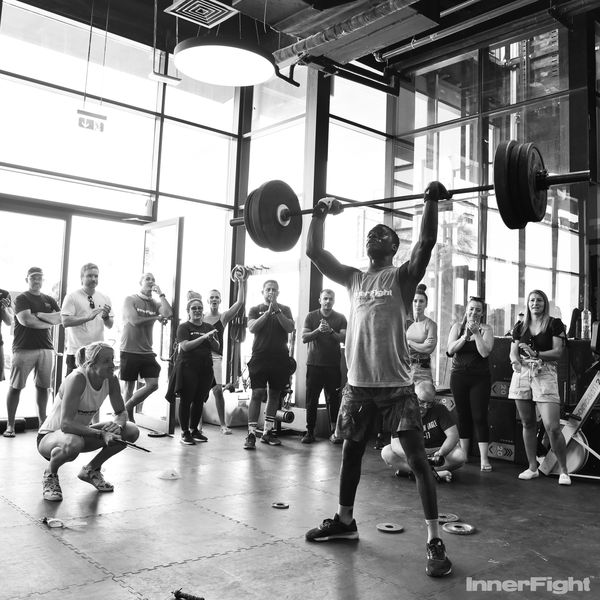How to Set Realistic Fitness Goals
.avif)
How to Set Realistic Fitness Goals that Work
The gap between intention and action is where fitness journeys stall. January enthusiasm, then empty gyms by March, pre-summer fitness focus, that fizzles out before beach season begins. The problem isn’t willpower, it’s approach. Discover how to set realistic fitness goals using a SMARTER framework designed for long-term success.
At InnerFight Endurance we see fitness differently. It’s not a temporary project with an endpoint; it’s an endurance lifestyle with goals that enhance your life in all areas. We begin our goal-setting journey with the most overlooked aspect of goal-setting: your mindset.
Understanding "Why" Before "What"
It’s easy to rush into setting targets without examining motivations. We get caught up in what we think we should want, not what will actually fulfil us. Sound familiar?
We ensure clients really take their time, asking thought provoking questions to help them develop a deeper understanding, to see if the goal is truly what they want. This reveals powerful insights about what will drive a sustainable fitness journey that lasts a lifetime.
Getting clear on long-term motivations is crucial for laying the foundations of endurance goals that span years, or decades. Don’t rush life-long goals, figure out what will really keep you going. Many of our clients seek the accountability and positive social circle that our endurance community provides, not the quick-win gains promoted on social platforms.
When you connect with fundamental values, your fitness journey becomes a meaningful path towards what truly matters. This is how to set realistic fitness goals that will inspire you even when things get tough.
The Endurance Vision
How do you uncover deeper motivations and create goals that stand the test of time? You need to get out of your head, and onto paper.
Sit down with a pen and paper and start big! What do you want to be doing (or able to do) 20-years from now? Then shrink it down, 10 years from now? 5 years from now? 2 years from now? 1 year from now? 6 months? 3 months? 1 month? 1 week? Tomorrow?
This exercise forces you to look beyond immediate desires and instant gratification to consider the vision for your life. A marathon becomes less about crossing a finish line, and more about being active and mobile in your seventies. The weight loss goal transforms from fitting into a specific outfit, to having the energy to play with your grandchildren decades from now.
By working backwards from your long-term vision, you create a chain of connected goals that build upon each other. This creates ‘goal hierarchies’ where immediate actions serve larger purposes, generating more sustained motivation.
Think beyond your immediate emotions, and be very honest with yourself. This is how to set realistic fitness goals that last longer than fleeting emotions or momentary aspirations.
Aligning Goals with Values
Sustainable goals need to align with the rest of your life. Consider when you feel at your best, or worst? Have you mapped out the big picture of your life right now? What values do you live by or would like to live by?
These questions reveal how to set realistic fitness goals that complement important aspects of your life. If family time is a core value, a training plan requiring two hours per day will create more tension than fulfilment. If career advancement is a priority, perhaps now isn't the time for an ultra-marathon.
Goals are most effective when they connect to what matters most to you. When fitness goals align with values, they become integral to our identity and life direction. How could your fitness goals support your values, and not compete with them?
Family values could be enhanced by involving your children in active outings. Professional ambitions benefit from increased energy and stress relief. Understand your deeper motivations, establish your vision, and align with core values to build fitness goals that aren't just achievable, they are truly satisfying.
This psychological groundwork transforms fitness from something you do, into an authentic expression of who you are, and who you will become. Start by building your base then you can add speed and intensity to truly build enduring fitness.
.avif)
Why SMART Goals Fall Short
You've probably heard of SMART goals (Specific, Measurable, Achievable, Relevant, and Time-bound). They work for simple objectives, but fitness goals have unique challenges making this 45-year-old business management framework too simplistic.
Traditional SMART goals focus on outcomes ("lose 20 pounds by summer") neglecting the mental, environmental, and adaptability factors critical for fitness success. They don't account for the need to reassess as you evolve, or the enjoyment factor that keeps you consistent.
Goal achievement depends on support systems, feedback mechanisms, and the development of self-regulation.
The SMARTER framework is designed for fitness success, this system teaches you how to set realistic fitness goals that you will stick to, because you enjoy them and they align to your needs, values and circumstances.
S: Specific and Self-Directed
Specificity drives intent, which engages your subconscious mind to initiate action. A specific and self-directed goal states exactly what you want to achieve, and ensures it genuinely resonates with you - not what social media, fitness magazines, or your gym buddies think you should do!
The self-directed component ensures you're setting goals for yourself, not to please or impress others. Your fitness journey is personal, and your goals should reflect that.
Example: In 8-weeks I will enhance my core strength to perform 10 consecutive hollow body holds for 30 seconds each, with proper form, so that I avoid lower back pain from working at my desk all day.
M: Measurable and Meaningful
Traditional SMART goals emphasize measurability, because tracking provides feedback and motivation. The SMARTER framework expands this to include meaningfulness. At InnerFight Endurance we help clients find meaning in their endurance goals, then help them put structure to it.
The key is selecting metrics that matter for your journey. If your goal relates to performance, then speed or strength measurements make sense. But if your aim is to preserve your health then tracking stress and sleep are just as critical.
Our amateur athletes don’t run 150 km per week, but stress from their everyday lives can be the same as an elite athlete gets from their training, it just comes in a different form. Stress resilience is a lifelong skill that endurance teaches. Elite training sessions are wasted on the everyday amateur, but their recovery protocols are very applicable.
A: Achievable and Adaptable
Fitness journeys rarely follow a linear path. Circumstances change, affecting available time and energy. An injury or illness will temporarily alter capabilities. Build in goal adaptability to navigate the challenges.
Setting achievable goals means being honest about your starting point and the resources (time, energy, equipment, finances) available. But the adaptability component means creating flexible milestones from the beginning.
Even the most perfectly crafted goals can remain wishful thinking if your mind is not aligned. Awareness-building practices enhance conscious connection with your own thoughts, habits and actions. Simply observing and recording your behaviour is one of the most effective strategies for change.
R: Relevant and Recovery-Focused
Recovery strategies are really the main things we should take from the elites - train like a time efficient smart amateur, but recover like a pro! This is high performance.
Fitness goals usually focus on the ‘work’ (exercise, diet, active components). Yet research consistently shows that adaptation and progress happen during recovery, NOT during the workout itself.
A recovery-focused approach means scheduling rest days, optimising sleep, reducing stress and nourishing your body for success. You can’t rush endurance - consistency and recovery reduce the risk of injury or burnout.
Building a structured training approach with recovery blocks is really important. Setting up key workouts on either side of your recovery block reinforces how much it actually enhances fitness. Learning how to set realistic fitness goals must include active forms of recovery.
T: Time-Bound and Trackable
You need systems to monitor progress consistently, then adjust as needed. Tracking enhances awareness supporting subconscious shifts.
Effective goals need deadlines and milestones - specific points to assess progress and make adjustments. This trackability component ties directly to self-regulation, which is a critical factor in goal achievement.
Some people thrive with detailed daily records, while others prefer weekly check-ins or occasional assessments. The key is finding a tracking system that motivates rather than being overwhelmed by fitness data.
By making goals time-bound and trackable, in a way that works for your personality, you create a feedback loop that sustains motivation and allows adjustments.
E: Enjoyable and Environment-Supported
Enjoyment is rarely mentioned in goal-setting literature, yet it's perhaps the single most important factor in long-term fitness adherence. Enjoyment equates to dopamine (the reward seeking neurotransmitter) making your body and brain ‘push’ you towards things that are fun.
There are a thousand ways to be fit, but what makes you smile? A perfectly structured program is worthless if you dread doing it. Intrinsic motivation (doing something because you enjoy it rather than for rewards) predicts long-term success.
Equally important is creating the right environment to support your goals. This includes the practical elements, like equipment, but also the social environment. Supportive relationships and community connection are a huge part of our endurance approach.
R: Realistic and Reviewed
Effective goal-setting is an ongoing process, not a one-time event. Learning how to set realistic fitness goals includes reflecting on when you were wrong!
Being realistic doesn't mean aiming low, it means understanding the requirements of your goal, and honestly assessing whether they align with your current circumstances. A realistic goal stretches you without setting you up for failure. Assess your goal often and see if the goal still serves you.
Regular reviews transform goal-setting from a static, one-time declaration into a dynamic, evolving process that responds to your changing needs and circumstances.
SMARTER Success
The SMARTER framework teaches you how to set realistic fitness goals by addressing the psychological, practical, and adaptive elements needed for sustainable success.
By incorporating the extra dimensions (Self-directed, Meaningful, Adaptable, Recovery-focused, Trackable, Enjoyable, Environmental, Realistic and Reviewed) you move away from the 1980’s business management tool, towards goals that can become reality.
The SMARTER aligns goals with your values and lifestyle, ensuring enduring fitness becomes a natural part of who you are.
Want help with your fitness goals, and a supportive endurance network? Find out more about InnerFight’s World-Class Coaching and Community.
Fun - HONESTY - Simplicity - Smash Life - Mental Toughness - Hard Work





.avif)







.jpg)
